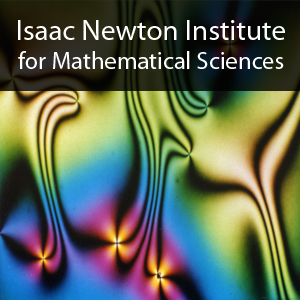Atomistic molecular dynamics simulations of cyanobiphenyls: A test bench for liquid crystal theories
Duration: 46 mins
Share this media item:
Embed this media item:
Embed this media item:
About this item

| Description: |
Muccioli, L (Università di Bologna)
Wednesday 20 March 2013, 14:50-15:40 |
|---|
| Created: | 2013-03-21 16:43 |
|---|---|
| Collection: | The Mathematics of Liquid Crystals |
| Publisher: | Isaac Newton Institute |
| Copyright: | Muccioli, L |
| Language: | eng (English) |
| Abstract: | The recent increase in computer speed has determined unprecedented possibilities of modelling physical and chemical processes “in silico”. This is most true for liquid crystals, as the large system sizes and long time scales necessary for reliable predictions of their self-assembly are now becoming affordable, and where atomistic molecular dynamics simulations have proved that an accurate but classical description of intermolecular forces is adequate for obtaining a quantitative agreement with experiments for nematics and discotics. In this context, in Bologna we developed a force field for n-alkyl cyanobiphenyls (nCBs)able to reproduce their experimental phase transition temperatures within a few degrees. The choice of nCBs as prototypical liquid crystal systems opens the way to an informative cross comparison between experiments, simulations, and theory. In fact, the abundance of experimental studies provides a rich database of almost any possible physical property, which serves as a stringent test for simulation predictions, and is able to reveal weaknesses and strengths of the microscopic model. Once the model has been validated, simulations can be considered superior to theoretical predictions, because they rely on a much lower number of assumptions. It becomes then possible to “revisit” and validate existing and maybe even very successful theories, not only on the basis of their predictions (comparison with the experiment) but also on their physical foundations (comparison with simulation s). This presentation will cover all the stages of this “virtuous” exercise, including: the derivation of the force field; II) the calculation of macroscopic observables III) the comparison with mean field descriptions for the nematic and smectic phases; IV) new attempts of addressing continuum theories for liquid crystal alignment. To conclude, a personal perspective of where theory could help the simulation and of future applications will be given. |
|---|---|
Available Formats
| Format | Quality | Bitrate | Size | |||
|---|---|---|---|---|---|---|
| MPEG-4 Video | 640x360 | 1.93 Mbits/sec | 668.06 MB | View | Download | |
| WebM | 640x360 | 1.02 Mbits/sec | 353.75 MB | View | Download | |
| iPod Video | 480x270 | 522.15 kbits/sec | 175.92 MB | View | Download | |
| MP3 | 44100 Hz | 249.8 kbits/sec | 84.22 MB | Listen | Download | |
| Auto * | (Allows browser to choose a format it supports) | |||||

